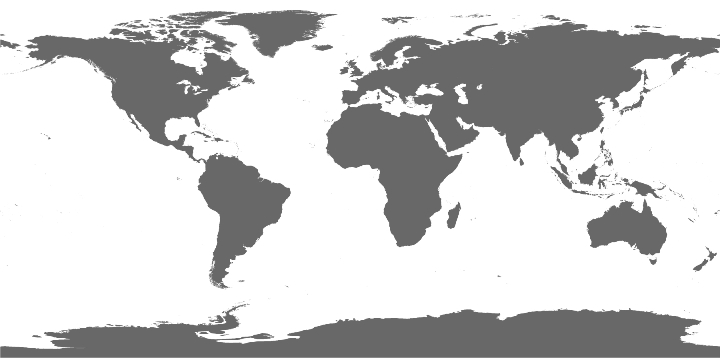Dataset 247
Zooplankton survey of Oneida Lake New York 1964 to present
Realm: Freshwater
Climate: Temperate
Biome: Small Lake Ecosystems Central latitude: 43.196619
Central longitude: -75.919813
Duration: 46 years, from 1975 to 2020
Climate: Temperate
Biome: Small Lake Ecosystems Central latitude: 43.196619
Central longitude: -75.919813
Duration: 46 years, from 1975 to 2020
51502 records
34 distinct species
Across the time series Leptodiaptomus minutus is the most frequently occurring speciesMethods
Zooplankton samples were collected at variable intervals throughout the year from 1964 to 1974 at the Shackelton Point site and at weekly intervals from 1975 to the end of the data series during May - October, and from November - April as weather permitted, at 1 to 6 sites. The main site used was Shackelton Point. Because one site (Billington Bay) was only sampled some years, it is not included in the weekly average table. This table averages data taken from five sites (Shackelton Point, Buoy 109, 117 and 125, and Three Mile Bay) collected during the same sampling week. Sampling week is identified with a number that in most cases is the same as the week number of the year. On a small number of occasions, a sampling was conducted on a Friday to Sunday for the following week. The net used was a 153-um mesh nylon net (0.5 m diameter) towed vertically from approximately 1 m off the sediment surface to the water surface. The efficiency of the net was measured with flow meters from 1999 to present. If flow meter readings indicate a malfunction or human error (efficiencies below 50% and above 125%) and when no flow meter was used, we assumed an efficiency of 87.4% (average of the 1999 to 2010 sampling period 87.4% SD 9.5%, N=1655). Flow meters were calibrated each year. When flow meters were not available, volume strained was calculated as [Vol Strained] = [Tow Depth] * pi()*0.25^2*0.874. Samples were preserved in 8 % sugar-formalin solution (1964-1996) or 70 % ethyl alcohol (1997-present). Samples are stored at the Cornell Biological Field Station. Crustacean zooplankton were counted (1964-1974) and counted and measured (1975-end of data series) using a dissecting microscope (1964-1982), a touch screen-caliper setup with computer-assisted plankton analysis system (1983-1997) (WSAM, Hambright and Fridman 1994) or a digitizing tablet and microscope (1998-end of the data series). For each sample, a 1-mL sub-sample was drawn with a calibrated Hensen-Stempel pipette or large-bore calibrated automatic pipette and all crustaceans counted and measured (since 1975). Additional sub-samples were drawn until a minimum of 100 animals were counted and measured from each sample. From 1964 to 1979, three such subsamples were counted and averaged. Gamble et al. (2006) compiled the data from 1975 to 1997 for a study on biomass size spectrum and re-measured historic samples from 1975 when only Daphnia were measured. Unrealistic length measurements sometimes substantially (for small cladocerans) outside accepted maximum lengths occurred on a small number of occasions and were assumed to be in error. They were replaced by the modal length for small cladocerans and the maximum accepted length for other species [25 of 39398 Bosmina, 146 of 28882 Chydorus, 16 of 7035 Diaphanosoma, 8 of 22767 Eubosmina, 4 of 77932 Diacyclops and 82 of 61208 nauplii] Biomass for individual species was calculated using length-weight regressions based mainly on Bottrell et al. (1976) and summarized in Watkins et al. (2011). Length-weight parameters are included in the taxa table. For years without length measurements (1964 to 1974 and 1978), the biomass is estimated from the average weight of the species or species group calculated for the time period 1975 to 1981 and given in the taxa table. Taxonomic detail varies over time. For the period 1964 to 1974 all crustacean were categorized in 10 species groups: Bosmina, Ceriodaphnia, Chydorus, Daphnia pulicaria, D. mendotae, D. retrocurva, Leptodora, Diaphanosoma, calanoid copepods and cyclopoid copepods. Nauplii were excluded in 1964-74. Information on the taxonomic details is in the taxa table. Copepod nauplii were counted since 1975 but not identified to group. Nauplii are underestimated due to the large mesh size (153µm). Rotifers and zebra mussel veligers are not included in this data set. More information regarding specifics of data collection is available from the data package contact. Individual length data can be requested from the data package contact for the post 1998 time period.Unit of abundance = CountPerSqM, Unit of biomass = DryBiomassCitation(s)








.
In (Eds.),
(p. ).
:
.
,
(),
.



